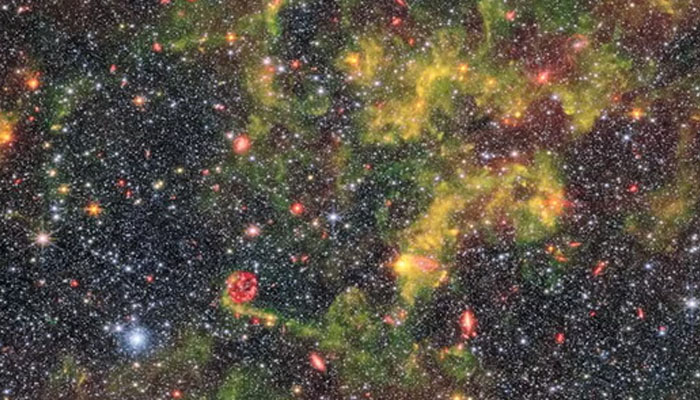James Webb Space Telescope locks eerie looks of early universe
Astronomers believe that galaxies like Bernard can demonstrate processes like star formation
August 14, 2023

A new image of a nearby Bernard's galaxy captured by the James Webb telescope reveals insightful details about what a "very early" universe may have looked like.
The details in the image of eerie-looking and "irregular" galaxy NGC 6822, also known as Bernard's galaxy have revealed the stars of the galaxy, located about 1.5 light years away, in better clarity for further astronomical study.
Bernard is the Milky Way's nearest neighbour with low metallicity, as well as low proportions of elements other than hydrogen and helium. This galaxy was noted by the European Space Agency (ESA).
In the very early cosmos, before the first generation of stars were born, lived, and died, everything had very little metallicity, scientists theorised. This is because elements other than hydrogen and helium are predominantly produced by stars throughout the course of their lifetimes.
Astronomers believe that current galaxies with low metallicities, like NGC 6822, can demonstrate how processes like star formation and the life cycle of interstellar dust occurred in the early cosmos.
The Near-InfraRed Camera (NIRCam) and Mid-InfraRed Instrument (MIRI) placed on the Webb telescope were used to observe the galaxy.
Both NIRCam and MIRI explore several regions of the electromagnetic spectrum, enabling the telescopes to examine various elements of the same galaxy.
The ESA observed that while the NIRCam is appropriate for viewing its tightly packed field of stars, MIRI is particularly sensitive to gas-rich regions.
With the galaxy's dust and gas reduced to translucent red wisps in the NIRCam image, the galaxy's uncountable stars are now visible in unparalleled detail, allowing for more in-depth study.
Galactic dust is clearly visible in the MIRI instrument's image, which hides the stars and reveals the blue light emitted by polycyclic aromatic hydrocarbons, organic chemicals that are essential for star and planet formation.











